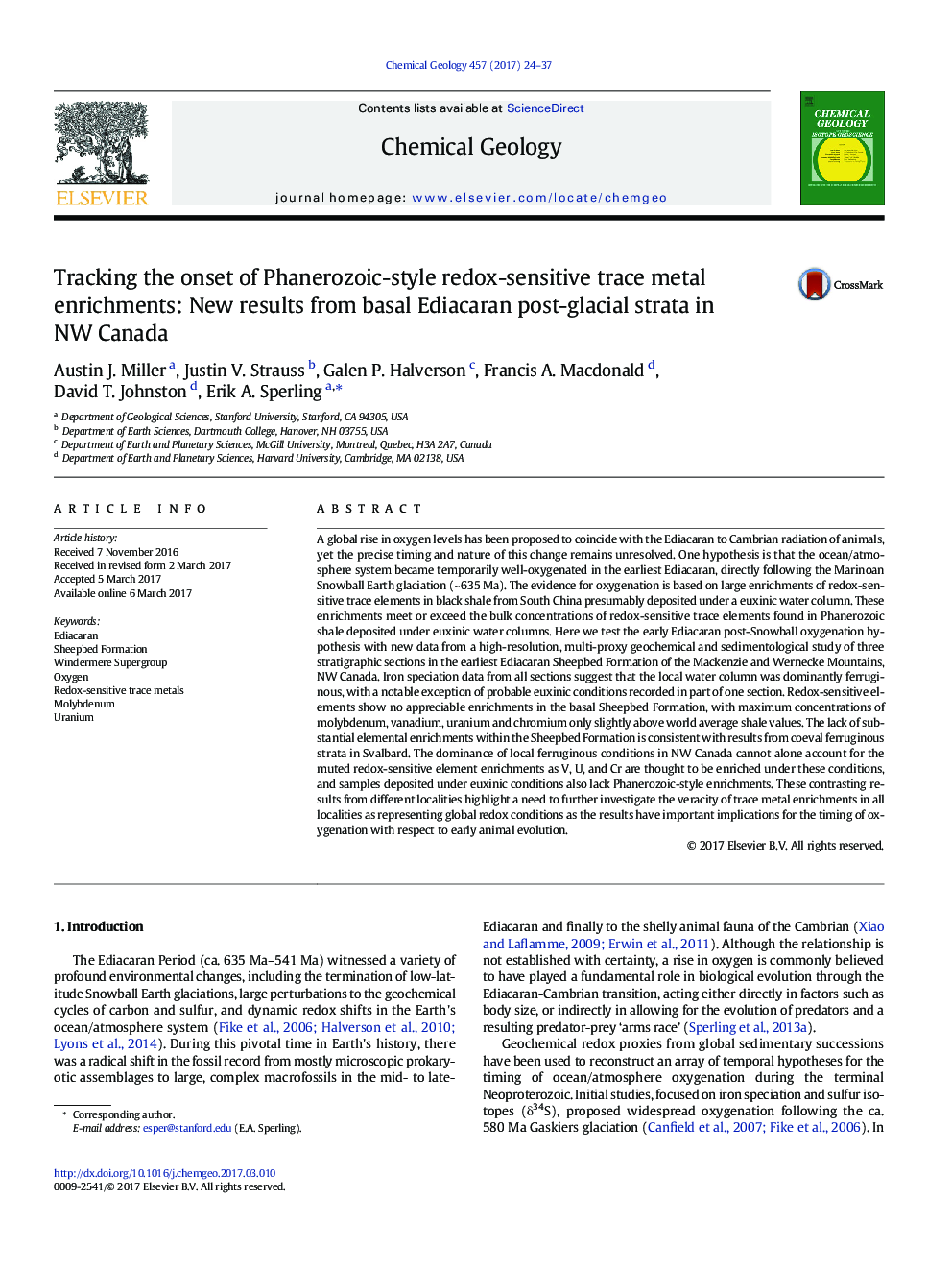| کد مقاله | کد نشریه | سال انتشار | مقاله انگلیسی | نسخه تمام متن |
|---|---|---|---|---|
| 5782635 | 1637517 | 2017 | 14 صفحه PDF | دانلود رایگان |
- No Phanerozoic-style enrichments in redox-sensitive elements are present in NW Canada earliest Ediacaran strata.
- Trace metal patterns do not necessarily provide evidence for widespread oxygenation in the earliest Ediacaran.
A global rise in oxygen levels has been proposed to coincide with the Ediacaran to Cambrian radiation of animals, yet the precise timing and nature of this change remains unresolved. One hypothesis is that the ocean/atmosphere system became temporarily well-oxygenated in the earliest Ediacaran, directly following the Marinoan Snowball Earth glaciation (~Â 635Â Ma). The evidence for oxygenation is based on large enrichments of redox-sensitive trace elements in black shale from South China presumably deposited under a euxinic water column. These enrichments meet or exceed the bulk concentrations of redox-sensitive trace elements found in Phanerozoic shale deposited under euxinic water columns. Here we test the early Ediacaran post-Snowball oxygenation hypothesis with new data from a high-resolution, multi-proxy geochemical and sedimentological study of three stratigraphic sections in the earliest Ediacaran Sheepbed Formation of the Mackenzie and Wernecke Mountains, NW Canada. Iron speciation data from all sections suggest that the local water column was dominantly ferruginous, with a notable exception of probable euxinic conditions recorded in part of one section. Redox-sensitive elements show no appreciable enrichments in the basal Sheepbed Formation, with maximum concentrations of molybdenum, vanadium, uranium and chromium only slightly above world average shale values. The lack of substantial elemental enrichments within the Sheepbed Formation is consistent with results from coeval ferruginous strata in Svalbard. The dominance of local ferruginous conditions in NW Canada cannot alone account for the muted redox-sensitive element enrichments as V, U, and Cr are thought to be enriched under these conditions, and samples deposited under euxinic conditions also lack Phanerozoic-style enrichments. These contrasting results from different localities highlight a need to further investigate the veracity of trace metal enrichments in all localities as representing global redox conditions as the results have important implications for the timing of oxygenation with respect to early animal evolution.
Journal: Chemical Geology - Volume 457, 10 May 2017, Pages 24-37
